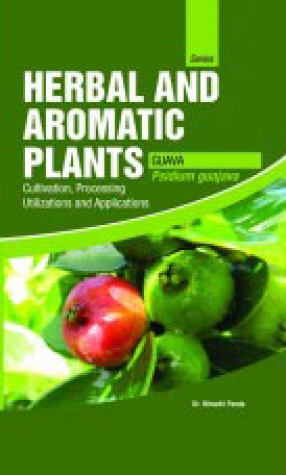Herbal and Aromatic Plants: Guava: Psidium Guajava: Cultivation, Processing Utilizations and Applications
The early Spanish explorers of the 1500’s found Strawberry Guava, ‘Acca sellowiana O.,’ growing as a native tree in America, where they were firmly established from Mexico southward to Peru. History records that Seminole Indians were growing guava trees in Northern Florida in 1816.
Guava is a tropical fruit, cultivated mainly in the Asian countries. It is quite similar in shape to pear and has a rind that is green in color and changes to yellow when it becomes over-ripe. Inside the rind, which is consumed along with the fruit and not peeled, there is flesh that is either white or pinkish/reddish in color. More often than not, you can find lots of small hard seeds enveloping the soft and sweet pulp of the fruit. Guava is quite rich in Vitamin C, maybe even more than orange, apart from a number of other vitamins and minerals. Browse through the article to know about the health and nutrition benefits of eating guavas.
Guava has been found to be beneficial for people suffering from the following ailments:
Acidosis, Asthma, Bacterial Infections, Catarrh, Congestion of the Lungs, Convulsions, Epilepsy, High Blood Pressure, Obesity, Oral Ulcers, Poor Circulation, Prolonged Menstruation, Scurvy, Swollen Gums, Toothache.
Scattered literatures are available and many excellent books and manuals have been written from time to time. However, the scientific literature on this subject is so rapidly and amazingly advancing and enlarging, that there is a stringent need of a book on this topic in a new garb to create an immediate and faithful response into the students, researchers and the growers. I hope the book in the present form will fulfill the needs. The authors will appreciate receiving suggestions for improvement of this book.
Get it now and save 10%
BECOME A MEMBER











Bibliographic information